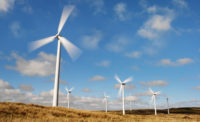How to prevent dangerous dust explosions
Every single facility that creates dust is at risk, which means a multitude of industries face this severe danger.

For some people, dust is just a minor nuisance, but for facility personnel in many industries, there is constant worry that dust buildup could lead to explosive situations. These situations can potentially destroy an entire facility or even be deadly. That’s why it’s important to conduct proper cleaning and maintenance to help proactively prevent flammable dust buildup.
According to a report from the U.S. Chemical Safety Board, Washington, D.C., there were 281 combustible dust incidents between 1980 and 2005, which resulted in 119 fatalities and 718 injuries. Since the release of that report in 2006, there have been an additional 105 incidents.
Every single facility that creates dust is at risk, which means a multitude of industries face this severe danger. Powders like flour or sugar, which can become airborne quickly, can become a hazard in certain facilities. However, it doesn’t end there. Powdered nutraceuticals, flavorings and additives all increase risk of an explosive environment.
It’s critical to take the appropriate steps to educate employees on the proper protocol and implement strategies that help prevent a potential disaster.
- Know that most dusts are combustible. According to the Occupational Safety and Health Administration (OSHA), Washington, D.C., any solid that can catch fire can become explosive when turned into dust. The National Fire Protection Association's Industrial Fire Hazards Handbook states, "Any industrial process that reduces a combustible material and some normally non-combustible materials to a finely divided state presents a potential for a serious fire or explosion. For example, aluminum, bronze and polypropylene dust are all combustible.”
- Provide access to all hidden areas of the plant. It is crucial that you can access every horizontal surface of the plant. This includes ductwork, beam and joist surfaces and the area above suspended ceilings.
- Regularly inspect for dust buildup. OSHA inspectors look for accumulations of 1/32 of an inch, about the thickness of a standard paper clip. If a layer of that thickness covers a surface area equal to 5% of the floor area (include dust on all surfaces beams, joists, ducts, etc. when determining the dust coverage area), immediate cleaning is necessary. Besides keeping dust in check, regular cleaning rounds can reveal an increase in dust particle buildup, possibly alerting you to equipment maintenance needs.
- Clean at regular intervals. Maintain an ongoing cleaning schedule and include all horizontal surfaces. Work cycle dust should be removed concurrently with operations. Be mindful to minimize dust dispersion while cleaning.
- Move dust collectors outside. OSHA recommends that dust collectors with a volume greater than 8 cubic feet should be located outside of buildings to limit the risk of further dust displacement.
- Ensure electrical wiring and equipment is approved for use in dust hazard conditions. Review OSHA 29 CFR 1910.399 to determine your level of hazard. According to OSHA, "The use of proper electrical equipment in hazardous locations is crucial to eliminating a common ignition source.”
- Use only vacuum cleaners approved for dust collection in hazard conditions. For example, vacuums approved for Class II conditions don’t produce sparks and are essential in hazardous dust environments. Facility personnel should also contact the safety person at their location to confirm the exact specifications match with the specific application.
- Control ignition sources. Display “No Smoking” signs throughout the facility. You can also help control static electricity by bonding and grounding equipment. Personal protective equipment can help prevent ignition from static electricity while also serving as a protective barrier for employees.
- Perform regular preventative maintenance on equipment. A common cause of ignition is equipment that hasn’t been adequately maintained. Check user manuals to see how often the manufacturer recommends conducting maintenance.
- Train employees to recognize and prevent hazards. Before they even begin work, make sure to walk employees through the potential risks and safe work practices related to their work. Provide employees with information on overall plant programs for dust control and ignition source control. Peridocally train. Make sure employees feel comfortable and have a process for reporting any unsafe practices.
Neglecting to perform the proper cleaning and maintenance at a facility puts employees and other building occupants in harm’s way. Make you and your employees are doing their part in preventing potential dust explosions.
Looking for a reprint of this article?
From high-res PDFs to custom plaques, order your copy today!





